Physics 30 - Unit C: Chapter 13.4
1/20
There's no tags or description
Looks like no tags are added yet.
Name | Mastery | Learn | Test | Matching | Spaced |
|---|
No study sessions yet.
21 Terms
Refraction
The change in direction of waves at the boundary between two different media.
this change in direction is caused by a change in
speed
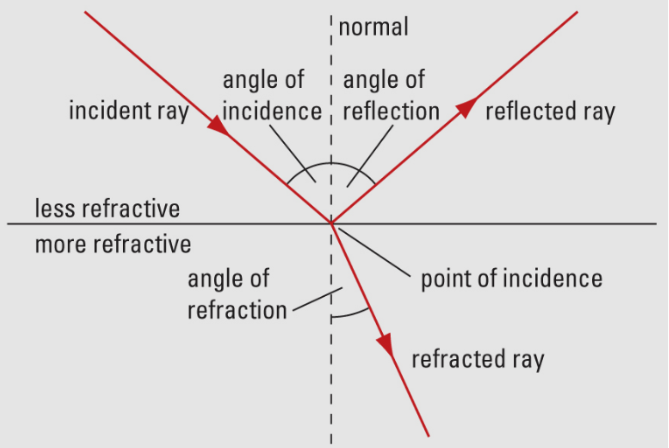
Refractive Index Equation
The more optically dense the medium, the slower light will travel through it.
refractive index of a medium (n)
speed of light in a vacuum (c)
speed of light measured in the medium (v)
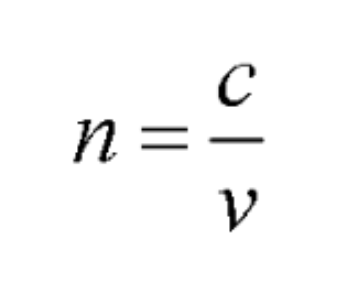
Index of Refraction Chart
Light Travelling From Low → High Refractive Index
When light travels from a medium with a low refractive index to a higher refractive index, it slows down and bends toward the normal.
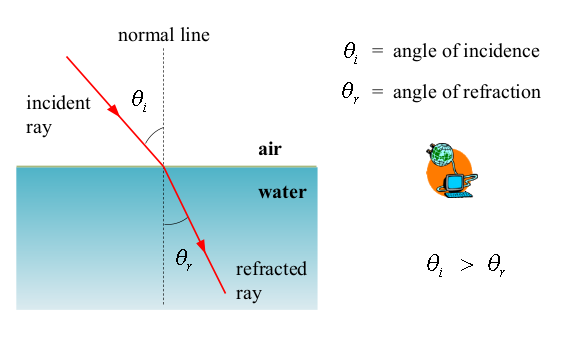
Light Travelling From High → Low Refractive Index
When light travels from a medium with a higher refractive index to a medium with a lower refractive index, it speeds up and bends away from the normal.
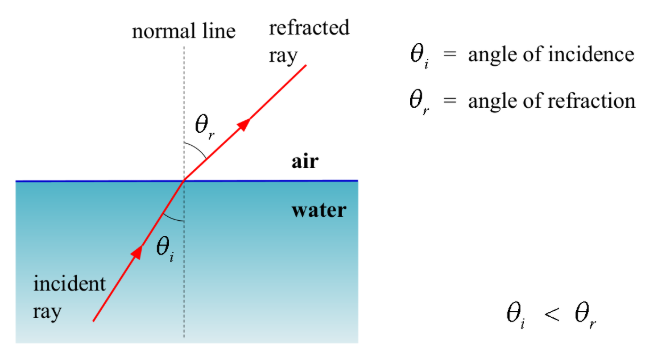
Universal Wave Equation
frequency of the source (f in Hz)
wavelength (λ)
Wavelength and Frequency have an inverse relationship.
source frequency is high = wavelength is short
source frequency is low = wavelength is long
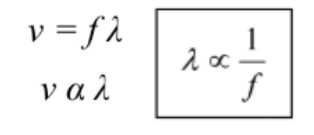
Snell’s Law of Refraction
For any ray that passes from air (θair) into a second medium (θr , refractive index n):
If the first medium is not air, then the general form applies:
Snell’s Law, Refraction and Wavelength
Light are transverse waves, it obeys the universal wave equation.
if frequency is constant, a change in speed would correspond with a change in wavelength
*IMPORTANT FACT ABOUT FREQUENCY*
As a wave moves from one medium to another, there is no change in frequency.
Total Internal Reflection
Reflection of all the incident light back into a medium of higher refractive index due to the inability to refract light beyond the maximum angle of 90°.
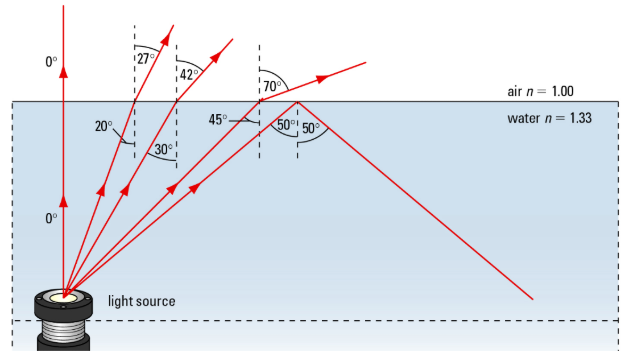
Critical Angle
The critical angle for any two media is the angle of incidence for which the angle of refraction is 90°.
to find critical angle, set angle of refraction to 90° → solve for angle of incidence

Prisms – Dispersion of White Light
White light is a mixture of a spectrum of colours: R O Y G B V
in order of increasing frequency = decreasing wavelength
Dispersion
The separation of white light into its components.
the lower the wavelength of light → the more it refracts
Converging (Convex) Lens
refract rays that are parallel to the principal axis through the real principal focal point.
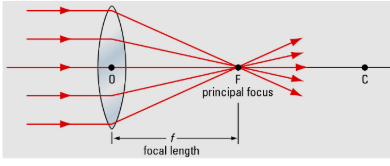
Diverging (Concave) Lens
refracts rays that are parallel to the principal axis so they appear to diverge from the virtual principal focal point.

Principal Plane
a line that is perpendicular to the principal axis, through the centre of the lens.
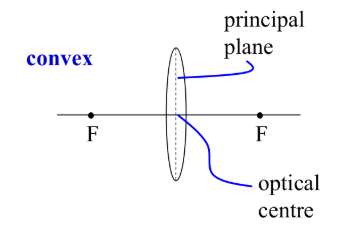
Optical Centre
the intersection point between the principal plane and the principal axis.
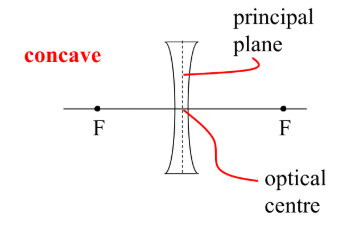
Drawing Ray Diagrams for Converging Lenses
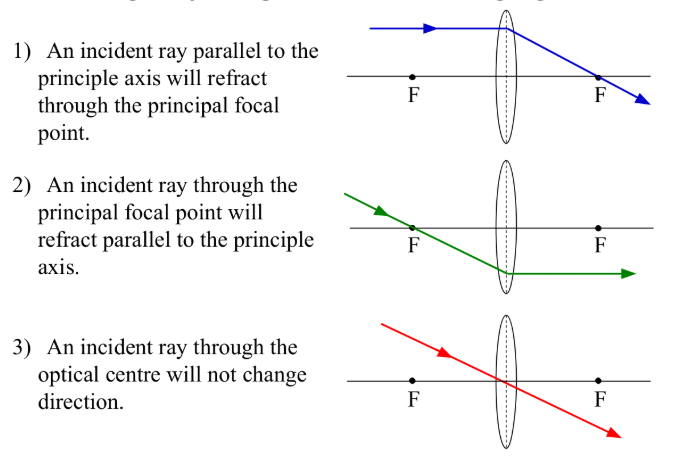
Drawing Ray Diagrams for Diverging Lenses

Equation for Thin Lenses

Sign Conventions for Use with the Thin Lens Equation
All distance measurements are relative to the optical center of the lens.
Positive Distance = real images.
Negative Distances = virtual images.
Positive Image Heights = above principal axis.
Negative Image Heights = below principal axis.
Converging Lenses = positive focal length.
Diverging Lenses = negative focal length.